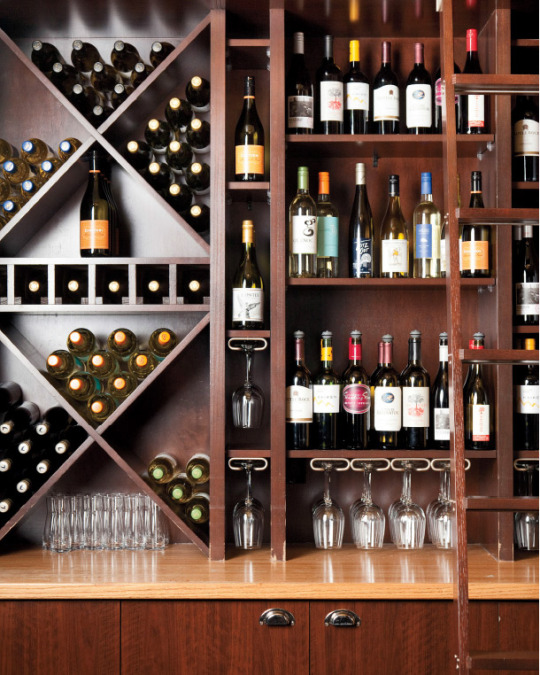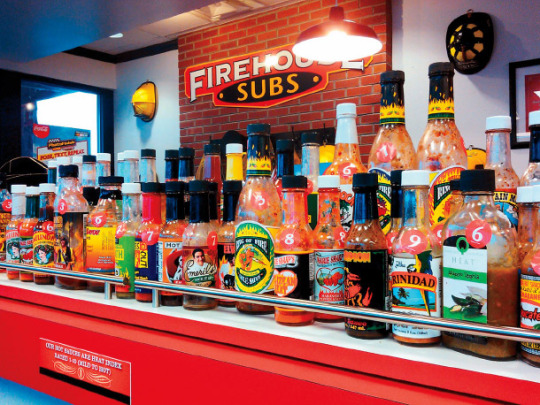When Chris LaRocca launched Crushed Red—his fast-casual franchise concept for customizable chopped salad and pizza—in 2012, several people approached him about buying a unit. But the St. Louis-area entrepreneur turned away even those who seemed experienced and financially capable.
After years of helping develop similar concepts, he determined that the way to succeed in the competitive restaurant space was to rely on multi-unit franchisees—those who can buy the territory for several units and build them over a relatively short period of time.
“Area development is the only thing we’re going to do,” says LaRocca, who had two company-owned Crushed Red units open at press time (with eight more on the way) and expected to have 11 franchised units up and running by the end of 2016. “It gets us there quicker, and the franchisees are more sophisticated. We don’t have to herd cats.”
LaRocca is not alone in his thinking. Over the past decade there has been a major shift toward multi-unit franchisees, who currently own 53 percent of the 450,000 franchise units in the U.S., according to FranData.
Multi-unit ownership used to be rare. But the tide has turned away from the owner-operator model, and these days many successful companies will deal only with multi-unit franchisees. In fact, multi-unit owners now control 76.5 percent of franchised restaurants.
There are several reasons for the shift. During the Great Recession, franchise brands saw that small operators of one or two units were struggling. Larger franchisees, who have greater volume and are often invested in more than one brand, were better able to weather the economic storm. Many franchise brands also learned that working with a single, experienced franchisee was easier than getting dozens or hundreds of people of varying experience levels up and running.
Furthermore, multi-unit franchisees often have strong relationships with realtors and vendors, smoothing the way for unit development. And perhaps most important for emerging brands in the booming fast-casual sector, multi-unit owners can facilitate rapid expansion across a region or even across the country. At a time when many brands are trying to get first-mover advantage, speed of expansion is key.
Despite naysayers who’ve insisted that LaRocca could open more restaurants simultaneously if he signed on single-unit franchisees rather than wait for multi-unit partners to develop their areas over several years, he is confident in his strategy.

“People have told me I’m crazy, that I could have 25 more restaurants open than I do now if I worked with single-unit franchisees,” he says. “That may be OK for a year. But then I’m dealing with dozens of franchisees and all the problems that come with that.
“I think franchising is changing,” he adds. “The owner-operator mentality has its place, but it takes a different mentality to execute operations with the consistency we want. The only way to get there is using the systems and tools and technology that multi-unit franchisees bring with them. If we build 50 restaurants, we don’t want 50 partners. It takes as much energy to manage 50 franchisees as it does 300. We want the sophistication of our partners to be as good or better than we are.”
Since 2005 the sandwich concept Which Wich has focused on multi-unit franchisees, but with a different strategy. The company offers a two-store commitment to franchise partners—even sophisticated multi-unit franchisees. If they are able to open two stores within two years, they’re allowed to develop additional units, typically one every six months thereafter.
“It gives us a level of comfort,” says Jeff Vickers, senior vice president of development for Which Wich. “When an operator gets their stores open, we know if it’s someone we want to continue with for the long term. It’s a win-win for us and for the franchisee. A lot of franchisors make big deals that never get developed. We want to make sure we’re being realistic and that we’re moving collectively in sync at a reasonable pace. Some franchisees will be happy with two units, some with five, some with 20 or 50. We want them to find a level they’re comfortable with.”
Moe’s Southwest Grill, an Atlanta-based franchise with almost 600 locations, turned its attention to multi-unit franchisees after Focus Brands purchased the company in 2007. Steve Corp, vice president of franchise sales, believes single-unit operators have a different mentality.

“Going from one unit to two is a giant leap for them. There are times when someone has a successful restaurant, then opens a second unit, and now they’ve turned one great unit into two mediocre ones,” he says. “That’s why multi-unit franchise partners are more attractive to us. They know the game; they have experience and know how to grow.”
He adds that multi-unit franchisees usually have more cohesive marketing strategies because territories with 18 or 20 single franchisees have to decide collectively how to spend local ad dollars from their marketing co-op. “What’s easier, having one or two experienced guys deciding how to spend marketing money, or going into a room with 18 people to make a decision?” he asks.
The arrangement also helps the corporate staff improve efficiency and responsiveness. “Single-unit franchisees need support on a much more basic level,” Corp says. “If we send a consultant into an area with 18 different franchisees, it’s going to take a lot of time and effort to coach them. If there’s just one or two franchisees who know what they’re doing, we get to spend more time helping them figure out how to increase sales and profit, vs. educating someone on how to run a restaurant and just stay afloat.”
Firehouse Subs, a fast-growing concept based in Jacksonville, Fla., with 869 units and counting, opened in the mid-’90s with single-unit franchisees but shifted its focus after the recession. “As a single unit, you’re vulnerable. One downturn or even a 10-month street project in front of your store can ruin you,” says Greg Delks, vice president of franchise development. “We realized multi-unit franchisees can survive better because they have access to capital, infrastructure and human resources. They can leverage that against multiple brands. And they can grow faster than single operators. We believe multi-unit operators are a much more solid foundation for growth.”
Firehouse Subs needs that solid foundation to meet its expectations for development. “We want to grow to 2,000 restaurants by the end of the decade,” Delks says. “Some say that’s very aggressive growth, but I submit to you, if you have 50 area representatives, and they each open three restaurants in their markets per year, they haven’t even broken a sweat. That type of growth really lends itself to the multi-unit environment.”
More mature franchise brands are also realizing the potential of multi-unit ownership. Tom O’Keefe, president and COO of the 720-unit Smoothie King, says that when he joined the New Orleans-based company in 2013, multi-unit ownership was not a focus. “Even until last year, we only had one franchisee whose store count was in double digits,” he says. “That made me think we had a lot of runway to get our unit count up. But to do that, we had to be more creative and reach a little higher. We had to have a better store to sell to attract sophisticated multi-unit franchisees.”

O’Keefe and his crew created a new store prototype and logo and instituted an R&D pipeline for products, which resulted in Greek-yogurt smoothies, vegan options and vegetable-based drinks. They’re even testing a new POS system that will help multi-unit franchisees keep track of their stores. “We now present a better story about who we are, where we’re going and how we’re evolving as a brand,” he says.
It seems to be working. Smoothie King now has 40 percent multi-unit ownership, and O’Keefe says the company has signed on large multi-unit franchisees who previously worked with Domino’s, Pizza Hut and Five Guys.
Texas-based Mooyah Burgers, Fries and Shakes, a concept with more than 80 units, hasn’t shut the door on single-unit ownership but is focused on multi-unit operators—not only because of economies of scale and other efficiencies, but because multi-unit franchisees are becoming the norm, at least in the restaurant industry.
“We find that most folks entering the restaurant industry are looking for multiple opportunities,” says Ardag Tachian, Mooyah’s director of franchise development. “Most people’s appetites are greater than one store.”




